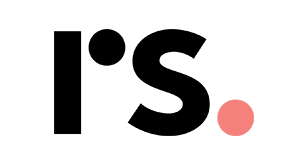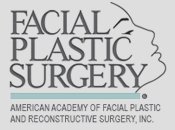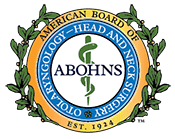Do I Need a Nose Job?
Facial balance is essential for creating an attractive appearance. Because of this, facial features that distract or overpower the rest of your beauty can often be problematic. At the center of your face, the nose plays a critical role in creating facial balance. While a subtle shifting of the eyes and mouth may not be noticeable to most people, the nose is another story. When the nose is too large, too long, crooked, or misshapen, it impacts the naturally attractive balance of the face. If you feel self-conscious about the look of your nose, just know that you aren’t alone. Below are the common reasons people have when considering rhinoplasty (nose surgery).
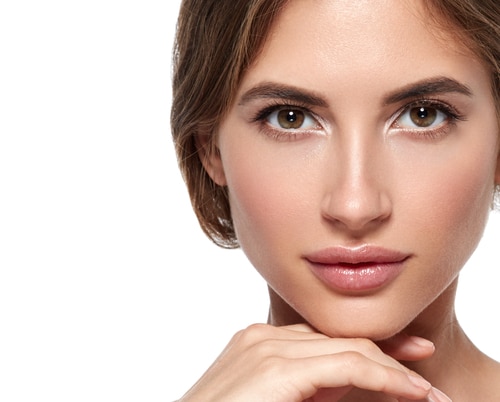
Reasons for Rhinoplasty
Natural Defects
One of the most common reasons people consider nose surgery is to correct a structural defect they were born with. In these cases, it is often the size of the nose that is unattractive. It may appear long, have an unsightly nasal bridge, or a distracting hump. Issues like hooked or drooping nasal tips are also often present from birth. The natural defects that affect size also play a primary role in obstructing your facial symmetry. Dr. Persky can address these issues and restore facial harmony with a well-planned and executed customized rhinoplasty.
Injuries As Kids
Whether it be a soccer ball to the face or a tumble off a bike, the facial injuries we receive as children can have a lasting impact on our facial aesthetics. Damage to the nose at a young age can result in a crooked shape or a prominent nasal hump. These types of defects can leave people feeling self-conscious. However, immediate correction of the issue may not be possible in young children. Depending on the injury, you may have to wait until your facial features have fully developed before considering corrective surgery. This is why many people wait until their teens and early 20s to plan their nose surgery. Once overall bone growth has stopped, between age 15 and 16, it is then safe to have rhinoplasty without worry over stunting the growth of the nose.
Trauma As Adults
Unlike childhood trauma, adult nose injuries can be corrected soon after the initial healing of the nose. With adult trauma, many people are left with structural abnormalities, such as crookedness or distinct humps. While we want to wait until a broken nose has healed to see the damage done, you don’t have to live long term with the effects if you don’t want to. We recommend waiting for the initial swelling to resolve for five to seven days before re-evaluating the nose for possible correction. If the bones are displaced, then they can be relocated under local anesthesia in our office. If the bones are straight without any bumps, then the nose is left alone. Corrective surgical rhinoplasty after nasal trauma is best delayed for four to six months to allow all swelling and healing forces to resolve.
Functional Reasons
While the term “nose job” is associated with aesthetic improvement, many people must consider surgery to correct functional issues of the nose. Functionality of the nose relates to the nasal airway and nasal breathing. A deviated septum can occur naturally or be the result of an accident. When the cartilage that separates the nasal passages becomes crooked, it can have a significant impact on your ability to breathe. Many people with a deviated septum snore or experience shortness of breath. One fix for these problems is septoplasty surgery with Dr. Persky.
Please feel free to contact us with any questions or concerns that you may have regarding your nose.
Creating Facial Harmony With Rhinoplasty
When consulting with prospective rhinoplasty patients, we analyze what it is about the patient’s nose that is attracting too much attention. What is drawing attention to the nose and away from the eyes (where the focus of the face should be)? Whether the tip is too bulbous, crooked, large, droopy, or has a large dorsal hump, the specific concerns are addressed in planning the rhinoplasty.
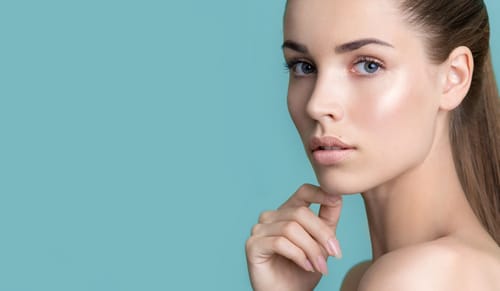
Elegant Rhinoplasty
The elegance of rhinoplasty lies in the creation of natural harmony between the nose and the surrounding characteristics. Dr. Persky uses his artistic vision to create facial harmony through plastic surgery, focusing on balance and proportions and not on dramatically altering your facial appearance. He uses the position and size of the rest of your facial features to determine the right nose shape for your specific aesthetics. This tailoring approach often leaves our patients with more attractive results. By creating a smooth dorsal line from the side, and slight curve from the tip of the nose toward the medial eyebrow, natural curves are restored to the nose, leading to the patient’s eyes.
You are welcome to schedule an in-office consultation, or if you prefer, email photos and we can discuss your nose over the phone, iChat, or Skype. Please contact our office by calling 818.501.FACE.
Have you ever seen something you found beautiful or attractive and struggled to explain why it is so visually pleasing? Many of us struggle to articulate why we find beauty in the appearance of a building, plant, animal, or human face. Often, the answer lies in the natural proportions or ratio of its shape and structure, not just the color or texture. In fact, symmetry has been scientifically linked to the attractiveness of people, architecture, artwork, and animals. The human brain is hardwired to prefer objects or faces that are symmetrical. The phenomenon of natural symmetry in architecture and nature is known as the Golden Ratio or Phi Ratio. This ratio is a mathematical sequence that, when expressed in nature and art, creates visual balance. When we look at faces (or art or architecture), our primordial brain center tells us within microseconds whether the proportions are natural. When choosing your facial plastic surgeon, hopefully they are not only able to recognize natural or unnatural proportions but are skilled at recreating the Golden Ratio when necessary.
What Is the Golden Ratio?
Initially described by Leonardo Da Vinci in the 1500s, the Golden Ratio is sometimes referred to as the “Divine ratio” because of its seemingly pre-planned aesthetics in nature. The number and placement of flower petals follow the Fibonacci sequence (the numerical sequence associated with the Golden Ratio). Shells are almost an exact physical representation of the Fibonacci spiral, and even the structure of human fingers follows the Golden Ratio. The Golden Ratio is 1 to 1.618. For instance, if the width of a nose is 1, the length of the perfect nose will be 1.618. The same is true of lip size; the ideal lower lip is 1.618 times larger than its corresponding upper lip. It can be argued that nature is naturally seeking balance.

The Golden Ratio and the Human Face
The human face is crafted from the Golden Ratio, and scientific studies have found that the closer to the Golden Ratio one’s facial proportions are, the more attractive they are commonly perceived. The mouth and nose, in particular, are each positioned at golden sections of the distance between the eyes and bottom of the chin.
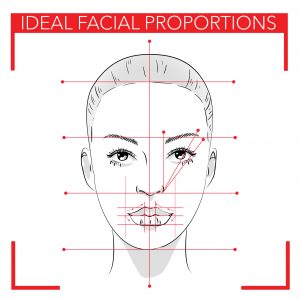
While other physical characteristics also impact how beautiful we find someone, most people gravitate toward strangers who have balanced features. Although the Golden Ratio is scientifically proven to increase physical attractiveness, we can’t rule out the influence of culture, style, and emotional or personal connections that are involved with creating physical attraction between two people.
The Golden Ratio in Renaissance Art
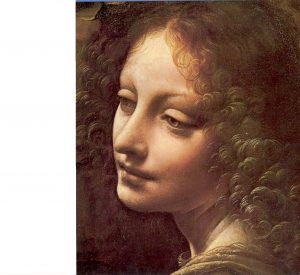 Artists of the renaissance were well aware of the natural beauty of the face and applied the Golden Ratio to their paintings. Leonardo da Vinci appreciated naturally occurring proportions of the face pertaining to the ratio of the width of the nose to the length of the nose as well as the ratio of the upper lip to the lower lip and many other facial features. Da Vinci used these universal proportions in creating his art, as in the face of John the Baptist above.
Artists of the renaissance were well aware of the natural beauty of the face and applied the Golden Ratio to their paintings. Leonardo da Vinci appreciated naturally occurring proportions of the face pertaining to the ratio of the width of the nose to the length of the nose as well as the ratio of the upper lip to the lower lip and many other facial features. Da Vinci used these universal proportions in creating his art, as in the face of John the Baptist above.

Above, note the S-shaped curve on the 3/4 view of the right cheek (corner of the eye to chin). This is called the Ogee Curve of youth and can be recreated with facial fillers such as JUVÉDERM VOLUMA® and Sculptra® Aesthetic. Note also how there are no harsh shadows and that the facial subunits blend together with each other in smooth transition.
 In da Vinci’s “Head of an Angel” (above), the figure is painted with plump cheeks, the Ogee Curve, lip fullness, and upward orientation of the corners of the lips. The jawline is smooth and well-defined, and the nasolabial fold is present but does not cast harsh shadows. The peri-orbital (around the eyes) region is firm, and the forehead is smooth.
In da Vinci’s “Head of an Angel” (above), the figure is painted with plump cheeks, the Ogee Curve, lip fullness, and upward orientation of the corners of the lips. The jawline is smooth and well-defined, and the nasolabial fold is present but does not cast harsh shadows. The peri-orbital (around the eyes) region is firm, and the forehead is smooth.
The Golden Ratio and You
The most important aspect of any aesthetic treatment, procedure, or surgery is making sure that you choose your treating physician extremely carefully based on their skill, experience, knowledge, and natural artistic vision. By using the Golden Ratios of natural beauty when performing facial surgeries such as rhinoplasty, Dr. Persky artfully creates the natural curves, fullness, hollows, light, and shadows of youth.
“Art is never finished, only abandoned. ”
– Leonardo da Vinci
As stated by Dr. Persky, MD, Persky Sunder Facial Plastic Surgery, Encino
Points from the Video:
00:04- He talks about how rhinoplasty is one of the treatments that they love to do at Persky Sunder Facial Plastic Surgery;
00:20- He discusses how patients ask them about their candidature for rhinoplasty;
00:45- He says that the most common reason for going in for a nose job is a bump on the nose, bridge, profile, or if the nose is too big;
01:40- He shares how they wish the eyes of the patient to get all the focus, rather than the nose;
02:00- He discusses the importance of consulting with a few different rhinoplasty surgeons
02:34- He welcomes patients with questions on rhinoplasty;
One of the things we love to do the most at Persky Sunder Facial Plastic Surgery is rhinoplasty. One of the things we are often asked is ‘Am I a candidate for rhinoplasty?’ Whether or not, you are a good candidate for nose job really depends on what it is that bothers you, how much it bothers you, and the skill, experience, and knowledge of the physician you are consulting with. The most common reasons patients see us for rhinoplasty is the little bump on the nose, bridge, profile, or if the nose is too big. Certainly all those things can be addressed with rhinoplasty; It’s good to sit down and let your surgeon know what bothers you, what you expect, and what you’ll be happy with.
Usually, our philosophy is that the nose should look natural and should get out of the way of the other facial features; the nose shouldn’t be the central focus when somebody is looking at your photograph or you in person. So if it’s a large hump on the nose, we eliminate that and all of a sudden, your eyes pop out, and we want the eyes to be the central focus of your face in person, and in photographs. So, whether or not you are a candidate for rhinoplasty is something that bothers you and if it can be easily corrected with rhinoplasty, then you are a candidate for rhinoplasty. But make sure that you consult with different rhinoplasty surgeons, and get a feel that they are listening to you and have a natural artistic vision. We will carry out a procedure that will meet your goals and not their set standard cookie-cutter rhinoplasty. If you have any questions about rhinoplasty, then please feel free to contact us.
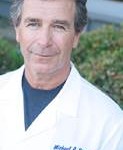 Dr. Michael Persky and Dr. Sarmela Sunder are located in Encino, California and Beverly Hills, California but service all of Los Angeles and the San Fernando Valley. Including, Beverly Hills, Hollywood, Hancock Park, Brentwood, Santa Monica, Pacific Palisades, Malibu, Sherman Oaks, Studio City, Calabasas, Woodland Hills, Tarzana, Westlake, Thousand Oaks, Agoura Hills, La Canada, Pasadena, and more. Please subscribe to our blog by clicking the link above, right, and “Like” us on Facebook. Thank you! + Michael Persky
Dr. Michael Persky and Dr. Sarmela Sunder are located in Encino, California and Beverly Hills, California but service all of Los Angeles and the San Fernando Valley. Including, Beverly Hills, Hollywood, Hancock Park, Brentwood, Santa Monica, Pacific Palisades, Malibu, Sherman Oaks, Studio City, Calabasas, Woodland Hills, Tarzana, Westlake, Thousand Oaks, Agoura Hills, La Canada, Pasadena, and more. Please subscribe to our blog by clicking the link above, right, and “Like” us on Facebook. Thank you! + Michael Persky
As stated by Dr. Persky, MD, Persky Sunder Facial Plastic Surgery, Encino
Points from the Video:
00:10- He discusses the most common nose problems for which patients wish to seek rhinoplasty for;
00:40- He further shares how they use computer imaging to photoshop the nose;
01:10- He discusses the importance of carrying out the imaging procedure accurately;
01:38- He shares how he consults with the patients prior to the treatment;
In our consultation for rhinoplasty, we like to consult with patients; Usually, a few things that bother the patients are bump on the nose, width of the tip, the nose might be big, or turned up too much. What we are able to do once we know what’s bothering the patient and by adding our own input, we sit and take photographs from the front and from the side, and then we are able to use computer imaging to photoshop the nose. Anybody can photoshop the nose, but what’s significant with photoshop is that it’s done to the extent that the result in real life should be matched with the photoshop. So anybody can make a nice looking nose but when I am photoshoping or computer imaging a patient’s nose, I’ll take it down to the point where I know with my surgical techniques I can give the patient that result, and it’s usually quite accurate, particularly on the profile views; So it’s nice to be able to consult with the patient and then let them see what their nose may look like after the surgery.
 Dr. Michael Persky and Dr. Sarmela Sunder are located in Encino, California and Beverly Hills, California but service all of Los Angeles and the San Fernando Valley. Including, Beverly Hills, Hollywood, Hancock Park, Brentwood, Santa Monica, Pacific Palisades, Malibu, Sherman Oaks, Studio City, Calabasas, Woodland Hills, Tarzana, Westlake, Thousand Oaks, Agoura Hills, La Canada, Pasadena, and more. Please subscribe to our blog by clicking the link above, right, and “Like” us on Facebook. Thank you! + Michael Persky
Dr. Michael Persky and Dr. Sarmela Sunder are located in Encino, California and Beverly Hills, California but service all of Los Angeles and the San Fernando Valley. Including, Beverly Hills, Hollywood, Hancock Park, Brentwood, Santa Monica, Pacific Palisades, Malibu, Sherman Oaks, Studio City, Calabasas, Woodland Hills, Tarzana, Westlake, Thousand Oaks, Agoura Hills, La Canada, Pasadena, and more. Please subscribe to our blog by clicking the link above, right, and “Like” us on Facebook. Thank you! + Michael Persky
As stated by Dr. Persky, MD, Persky Sunder Facial Plastic Surgery, Encino
Points from the Video:
00:05- Dr. Persky shares that it is important to get all the information from the physician’s office before undergoing any procedure;
00:20- He shares why it is important for the patients to know about things that need to be done before and after the surgery so as to ensure utmost care;
When patients decide to have a procedure done, they should have all the information from the office of the physician to know what to expect from the procedure and to have everything ready at home for the recovery. For instance, if someone has a rhinoplasty, there are many things that one needs to take care of post treatment. The same goes for patients who undergo laser procedures as they need to know the necessary precautions they should take as it can truly affect their final results.
 Dr. Michael Persky and Dr. Sarmela Sunder are located in Encino, California and Beverly Hills, California but service all of Los Angeles and the San Fernando Valley. Including, Beverly Hills, Hollywood, Hancock Park, Brentwood, Santa Monica, Pacific Palisades, Malibu, Sherman Oaks, Studio City, Calabasas, Woodland Hills, Tarzana, Westlake, Thousand Oaks, Agoura Hills, La Canada, Pasadena, and more. Please subscribe to our blog by clicking the link above, right, and “Like” us on Facebook. Thank you! + Michael Persky
Dr. Michael Persky and Dr. Sarmela Sunder are located in Encino, California and Beverly Hills, California but service all of Los Angeles and the San Fernando Valley. Including, Beverly Hills, Hollywood, Hancock Park, Brentwood, Santa Monica, Pacific Palisades, Malibu, Sherman Oaks, Studio City, Calabasas, Woodland Hills, Tarzana, Westlake, Thousand Oaks, Agoura Hills, La Canada, Pasadena, and more. Please subscribe to our blog by clicking the link above, right, and “Like” us on Facebook. Thank you! + Michael Persky
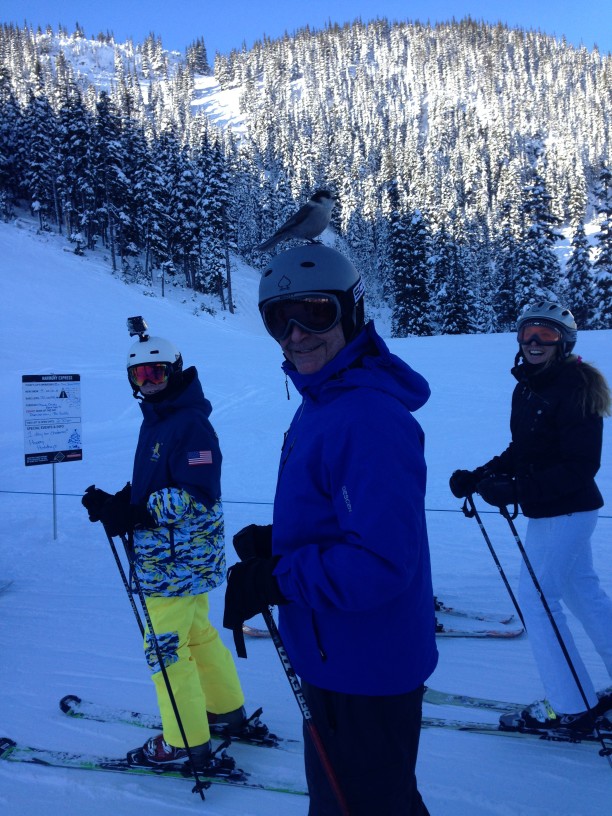 At a 6 week post rhinoplasty (nose job) office visit, the patient’s mother was concerned about a slight bump on the top of her daughter’s nose (where a much larger hump had recently been removed.) Our patient was extremely happy and pleased with her “new” nose, no longer bothered by the large hump and plunging, bulbous tip. “It looks great in selfies!!!”
At a 6 week post rhinoplasty (nose job) office visit, the patient’s mother was concerned about a slight bump on the top of her daughter’s nose (where a much larger hump had recently been removed.) Our patient was extremely happy and pleased with her “new” nose, no longer bothered by the large hump and plunging, bulbous tip. “It looks great in selfies!!!”
The patient’s mom asked, “Why is there a little bump coming back, why is it that it takes the nose so long to heal, other areas of the body heal within weeks, why do they say that it takes 12 months or longer to see the final result of a nose job?” It’s because a nose job is a sculpted piece of art, sculpted from the most precious of all materials in history, human flesh, bone, and cartilage.
The goal of rhinoplasty is to create a beautiful nose that is in harmony with the face. The nose should be pleasant to the eye of both patient and to others. Our philosophy is to sculpt the nose to fit the patient, as Michaelango said, “I saw an angel in the marble and carved until I set him free.” With rhinoplasty it is essential to use our artistic vision to create a visually pleasing nose, a piece of art!” Happy healthy New Year!
Add: Speaking of art, “The Goldfinch” by Donna Taart is an excellent novel about a piece of art with great quotes about beauty. I recently commented on our Facebook page about the beauty and art of the novel. The “snow finch” that perched on my ski helmet during our recent trip to Britsh Columbia (in the above photo) must be following us on Facebook, or was it just “Tweeting” back to me?
Dr. Michael Persky and Dr. Sarmela Sunder are located in Encino, California and Beverly Hills, California but service all of Los Angeles and the San Fernando Valley. Including, Beverly Hills, Hollywood, Hancock Park, Brentwood, Santa Monica, Pacific Palisades, Malibu, Sherman Oaks, Studio City, Calabasas, Woodland Hills, Tarzana, Westlake, Thousand Oaks, Agoura Hills, La Canada, Pasadena, and more. Please subscribe to our blog by clicking the link above, right, and “Like” us on Facebook. Thank you!
Recently in a spinning class, the instructor said, over Cher’s (It’s a Woman’s World) song, “…and if you like spinning in the dark, come to my 5 am class. We keep the lights low…everyone looks as if they are 10 years younger!” This was not at a Soul Cycle, where I hear the the lights are always low.
The “looking 10 years younger in the dark” comment reminded me of one of our tongue in cheek sayings at Persky Sunder Facial Plastic Surgery. Dr. Sunder and Dr. Persky believe that you should, “Look Good Even With the Lights On!”
Our practice’s goal is that you look your best and most beautiful always. “Your best” is looking naturally better than you did in the past. You should look like yourself…just a more rested, healtier, fresher, and youthful “self” (in any kind of lighting). We are proud of our skin care, spa aesthetician services, aesthetic procedures from the slightest cosmetic injection to non-invasive aesthetic treatments, to the most elegant rhinoplasty or facelift surgery.
We also believe that it is only right to give credit where credit is due. “Look Good Even With the Lights On at Persky Sunder Facial Plastic Surgery!” originated many years ago, in a dimly lit, early morning Barry’s Boot Camp class, when one of our most beautiful, intelligent, and outright funny and entertaining patient (you all know who you are) commented that after her recent visit to our practice that she “looks really good…even with the lights on.” We are grateful for the privilege of helping our patients achieve and maintain your facial aesthetic goals and health for many years to come. Please feel free to contact us with any questions or concerns that you may have regarding beauty and facial aesthetics. Be well!
 Dr. Michael Persky and Dr. Sarmela Sunder are located in Encino, California and Beverly Hills, California but service all of Los Angeles and the San Fernando Valley. Including, Beverly Hills, Hollywood, Hancock Park, Brentwood, Santa Monica, Pacific Palisades, Malibu, Sherman Oaks, Studio City, Calabasas, Woodland Hills, Tarzana, Westlake, Thousand Oaks, Agoura Hills, La Canada, Pasadena, and more. Please subscribe to our blog by clicking the link above, right, and “Like” us on Facebook. Thank you! + Michael Persky
Dr. Michael Persky and Dr. Sarmela Sunder are located in Encino, California and Beverly Hills, California but service all of Los Angeles and the San Fernando Valley. Including, Beverly Hills, Hollywood, Hancock Park, Brentwood, Santa Monica, Pacific Palisades, Malibu, Sherman Oaks, Studio City, Calabasas, Woodland Hills, Tarzana, Westlake, Thousand Oaks, Agoura Hills, La Canada, Pasadena, and more. Please subscribe to our blog by clicking the link above, right, and “Like” us on Facebook. Thank you! + Michael Persky
Statistics released by the American Society of Plastic Surgery (ASPS) for 2012 revealed that breast augmentation (286,000, down 7% from 2011) was the most popular cosmetic surgery. Rhinoplasty (nose job) was second (243,000, unchanged), blepharoplasty (eyelid surgery) third (204,000, up 4%), liposuction forth (202,000 down 2%), followed by facelifts (126,000, up 6%). It is thought that with baby boomers now at the age for facial rejuvenation that there will be increased demand for face lifts, neck lifts, and blepharoplasty.
 Dr. Michael Persky and Dr. Sarmela Sunder are located in Encino, California and Beverly Hills, California (The Lasky Clinic) but service all of Los Angeles and the San Fernando Valley. Including, Beverly Hills, Hollywood, Hancock Park, Brentwood, Santa Monica, Pacific Palisades, Malibu, Sherman Oaks, Studio City, Calabasas, Woodland Hills, Tarzana, Westlake, Thousand Oaks, Agoura Hills, La Canada, Pasadena, and more. Please subscribe to our blog by clicking the link above, right, and “Like” us on Facebook. Thank you!
Dr. Michael Persky and Dr. Sarmela Sunder are located in Encino, California and Beverly Hills, California (The Lasky Clinic) but service all of Los Angeles and the San Fernando Valley. Including, Beverly Hills, Hollywood, Hancock Park, Brentwood, Santa Monica, Pacific Palisades, Malibu, Sherman Oaks, Studio City, Calabasas, Woodland Hills, Tarzana, Westlake, Thousand Oaks, Agoura Hills, La Canada, Pasadena, and more. Please subscribe to our blog by clicking the link above, right, and “Like” us on Facebook. Thank you!
+ Michael Persky
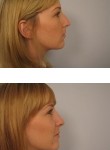 Maybe you have been unhappy with your nose for as long as you can remember, or perhaps you are having difficulty breathing; either way, a rhinoplasty or nose reshaping may be an option for you. Rhinoplasty is considered the most difficult of all facial plastic surgical procedures to perform (that would be other than total facial transplants).
Maybe you have been unhappy with your nose for as long as you can remember, or perhaps you are having difficulty breathing; either way, a rhinoplasty or nose reshaping may be an option for you. Rhinoplasty is considered the most difficult of all facial plastic surgical procedures to perform (that would be other than total facial transplants).
A rhinoplasty can change many things about your nose, including your nose size (in relation to your face), nose width at the bridge, the size and position of the nostrils, and nose profile (by downsizing visible humps, bumps or depressions on the bridge).
A rhinoplasty can also reshape the nasal tip, improve the appearance of large, wide or upturned nostrils and correct nasal asymmetry. From a functional standpoint, a rhinoplasty can correct certain breathing difficulties such as those due to a deviated septum. Rhinoplasty is also an option for certain birth defects or noses that have been injured in car or sports accidents
Here’s what you need to know now about rhinoplasty.
Rhinoplasty Defined
A rhinoplasty or nose job is a surgical procedure designed to reshape the nose. It can be done to correct a structural deformity (such as a bump or hook), provide subtle changes to nose size and shape to improve your appearance or to correct a functional problem (such as difficulty breathing due to a deviated septum).
The septum is the wall between the two nostrils. Composed of cartilage and bone, it divides the nasal cavity into halves. The ideal nasal septum is straight, separating the left and right sides of the nose into passageways of equal size. In contrast, a deviated septum occurs when the septum is severely shifted away from the midline. In severe cases, a deviated septum may cause difficulty breathing through the nose.
Are you a candidate for rhinoplasty?
We beleive that patients should give a great deal of thought to what bothers them about their nose as well as what would please them as a final rhinoplasty result. Changing one’s nose is not like getting different hair style or color. Hair color can be changed back to it’s original shade, and hair will grow back. Once a nose is reshaped, the original version will never return exactly the same. Therefore one of the first questions that we ask our patient in consultation is, “How long have you thought about rhinoplasty?” Another indication for rhinoplasty surgery is difficulty breathing through your nose, and having something about the appearance of your nose that you would like changed at the same time that your breathing is being surgically corrected. In this case often the change may be quite subtle, yet significant.
Preparing for Rhinoplasty
Your surgeon will likely give you a list of instructions before you undergo a rhinoplasty. In general, there is no eating or drinking after midnight on the evening before. Smoking cessation should occur before rhinoplasty, the longer the better, but even quitting a few weeks prior to surgery and not smoking during the recovery period is most helpful. Your surgeon may be able to provide tools to help you quit. In addition to all the other negative health affects associated with smoking, it severely compromises blood flow to the skin. This means there is less oxygen to aid in wound-healing, and necrosis (death) of skin can occur. Drinking alcohol in the week before rhinoplasty is also discouraged, as alcohol can also impair the healing process.
Your surgeon may also discuss discontinuing certain medications in the days or weeks leading up to your rhinoplasty. For example, non-steroidal anti-inflammatory drugs (NSAIDs) such as ibuprofen can increase the risk of bleeding. While considered natural, certain vitamins and herbal preparations such as Vitamin E, gingko biloba, omega-3 fatty acids and green tea can also increase bleeding risk. Tell your surgeon about everything that you are taking, even if it seems harmless. Never stop taking any medications without first discussing it with your doctor.
Some surgeons may prescribe homeopathic therapies before your rhinoplasty, such as arnica (an herb that can minimize bruising). In addition, mega-doses of vitamin C may also help aid clotting and wound healing. Some surgeons also prescribe steroids before a rhinoplasty to decrease the initial swelling.
Key Rhinoplasty Statistics
In 2007 there were 285,000 rhinoplasty operations performed in the United States, down 7 percent from 2006, according to statistics compiled by the American Society of Plastic Surgeons. Rhinoplasty is one of the top five cosmetic plastic surgery procedures performed each year.
Rhinoplasty Risks
Infection
Bleeding
Breathing issues (nasal obstruction)
Dissatisfaction with cosmetic results
Additional touch-up surgeries
Septal perforation. In these cases, there is a small whole in the septum, causing turbulence that results in a whistle when a person speaks or sings.
Anesthesia complications
Death
Fortunately these rhinoplasty risks and complications are extremely rare in the care of a qualified, experienced, skilled, and board certified Facial Plastic Surgeon.
Types of Rhinoplasty
Primary rhinoplasty is a nose-reshaping plastic surgery. Two types of primary approaches to rhinoplasty include “open” and “closed”:
Open Rhinoplasty. For major nose reshaping, the incisions are made in the vertical strip of skin separating the nostrils. This is called the columella. The skin and soft tissue are then elevated off the underlying structures of the nose so the surgeon can see the nasal anatomy. The open approach allows for precise adjust of the nasal cartilage and bone with secure suturing of nasal grafts.
Closed Rhinoplasty. For minor reshaping, many surgeons make incisions within the nose. The skin of the nose is then separated from the bone and cartilage, which form its supporting framework. Once exposed, bone and cartilage can be removed, reshaped, augmented or rearranged to achieve the desired new shape.
Secondary Rhinoplasty. Also called revision rhinoplasty, this is performed to correct problems that persist or develop after a previous rhinoplasty. Although the problems may be minor and easily corrected, often the problems are major, which makes the secondary rhinoplasty more difficult. Secondary rhinoplasty can also be done as an open or closed procedure.
Filler or Non-Surgical Rhinoplasty. This involves the use of injectable fillers to fill depressions, smooth out sharp angles or change the angle of the tip of the nose, restoring symmetry and making your nose appear smaller and more attractive. Instead of removing a bump, a surgeon would use an injectable filler to even it out. The results are not permanent.
We perform all of the types of rhinoplasty described above depending upon what our patient’s situation requires.
Evaluating Your Nose
Carefully choosing your rhinoplasty surgeon is the most important aspect of having your rhinoplasty. We are continually amazed at how some patients will spend more time on picking out the color of their new car than they spend on choosing their rhinoplasty surgeon.
An evaluation with a rhinoplasty surgeon is the first step in your decision to undergo rhinoplasty. During this meeting, your rhiniplasty surgeon will likely take photographs of your nose at varying angles. He or she will also talk to you about your expectations to make sure that yours are realistic.
It may be a good idea to bring photographs of noses that appeal to you, to aid in the dialogue about expectations as well as give the surgeon a better idea of what you want out of your rhinoplasty. In addition, your surgeon can show you photos of other rhinoplasty patients with similar nose shapes, which can help you better understand the likely results. We then use computer imaging to show how your nose may look after your rhinoplasty.
If you are having rhinoplasty, you may also need to consider other facial procedures to achieve balance and proportion. For example, chin augmentation is often performed with rhinoplasty. Other procedures that are sometimes performed with rhinoplasty are otoplasty (ear pinning) and blepharoplasty (eye lids).
The Rhinoplasty Procedure
Most rhinoplasties are performed on an outpatient basis in a hospital or surgical suite. Exactly how long the procedure takes depends on the type of rhinoplasty that is performed. For example, a primary rhinoplasty normally requires two to three hours in surgery, while a secondary rhinoplasty can take as long or much longer. A filler rhinoplasty can take just 15 minutes.
Anesthesia.
Your surgeon will likely recommend local anesthesia with some sedation or general anesthesia for your primary rhinoplasty. A secondary rhinoplasty will often involve general anesthesia due to the complexity of the procedure. A filler rhinoplasty requires just local anesthesia.
The Incision
Surgery of the nose is performed either using a closed approach procedure(where incisions are hidden inside the nose), or an open approach procedure(where an incision is made across the columella in an inverted V shape). The surgeon then raises the soft tissues that cover the nose through these incisions. This provides access to reshape the structure of the nose.
The Reshaping
Your surgeon can reduce or augment nasal structures with cartilage grafted from other areas of your body. Most commonly grafts are taken from inside the nose, the nasal septal cartilage. If not enough septal cartilage is available, then cartilage is taken from the ear or the rib.
Closing the incision
Once the underlying structure of the nose is sculpted, the nasal skin and tissue are redraped and the incisions closed.
Recovering from Rhinoplasty
You will probably be excited, if not anxious, to see your new nose, but patience is key after rhinoplasty. Complete results are not immediate and can take up to one year to be fully evident. Usually your new nose looks very nice after two to four weeks.
You will be unable to breathe through your nose for the first 24 hours, due to internal nasal swelling and crusting. Our practice only very rarely uses nasal packing, which is stuffed up the nose to help reduce bleeding by those surgeons who have not mastered the technique of no packing. Not packing the nose greatly decreases pain as well as swelling and bruising after rhinoplasty. Pain in our practice is usually more discomfort of having a stuffy nose, perhaps a feeling of sinus pressure headache. We recommend Tylenol, but give our patients an oral narcotic pain releiver just in case, and ask that they take the pain pill before going to sleep for the night. Most people who undergo rhinoplasty can stop pain medication after 48 hours. Some people feel nauseated after the surgery.
You may experience limited bleeding during the first day. Our patients usually have no bleeding after the first 24 hours. Your surgeon may also tell you to apply a cold compress (we prefer baggies of frozen peas) to your nose to reduce swelling and to elevate your head for the first 24 hours. It is important to avoid any trauma to the nose during the first weeks after surgery. Blowing your nose is not permitted for the first two weeks after rhinoplasty. This can be tough, as you may feel stuffy. We ask our patients to return to our office for the rhinoplasty surgeon to clean the inside of the nose, which helps improve the air way. Decongestants may help.
You will likely be asked to return in four or five days after surgery so the surgeon can remove the stitches. On day four or five, the nasal splint is removed. Your nose will still be swollen, but after two weeks much of the swelling will have decreased. At this point, all nasal packing, splints and other post-surgical dressings should be removed. A splint may be placed over the outer part of your nose to protect your nose as well as help it hold its new shape during the healing process. The surgeon may also place a softer splint inside your nose to prevent scarring inside the nose.
By one month, 85 percent of the swelling will have gone down. The remaining swelling may take up to one year. For these reasons, you should wait at least one year before undergoing revision rhinoplasty.
Rhinoplasty Cost
The cost of cosmetic surgery tends to comprise the surgeon’s fee, anesthesia fee, and operating room fee. The anesthesia fee ranges from $900 to $2,000, the facility fee ranges from $1200 to $2,400 and the rest of the cost is the surgeon’s fee which can range from $3,500 to $20,000.
The national average for plastic surgeon fees for rhinoplasty is $6,000. Secondary rhinoplasty can cost up to three times as much, due to its complexity. A filler rhinoplasty costs a few hundred dollars, but results are not permanent.
If you decide you need an additional facial procedure later (such as chin augmentation), the two procedures may be more expensive than if you have them at the same time.
Insurance does not typically cover the cost of cosmetic procedures, but if the purpose of your rhinoplasty is to improve breathing, it is considered reconstructive and may be covered by insurance. It is a good idea to contact your insurance company beforehand and find out their exact policy.
Consult a Qualified Rhinoplastic Surgeon
Before deciding on rhinoplasty, be sure to discuss treatment options with a board-certified plastic surgeon or a board-certified facial plastic surgeon. Most facial plastic surgeons do their residency training in otolaryngology-head-and-neck surgery, followed by fellowships in facial plastic surgery. Plastic surgeons do their residency training in general surgery followed by a fellowship in plastic surgery,
Plastic surgeons should be certified by the American Board of Plastic Surgery. Facial plastic surgeons should be certified by the American Board of Facial Plastic and Reconstructive Surgery. Board certification assures you that your surgeon has had extensive training and is up to date on new technology and techniques.
Source:
American Society of Plastic Surgery website article on nose surgery.
American Academy of Facial Plastic and Reconstructive Surgery website article on rhinoplasty.
 Dr. Michael Persky and Dr. Sarmela Sunder are located in Encino, California and Beverly Hills, California but service all of Los Angeles and the San Fernando Valley. Including, Beverly Hills, Hollywood, Hancock Park, Brentwood, Santa Monica, Pacific Palisades, Malibu, Sherman Oaks, Studio City, Calabasas, Woodland Hills, Tarzana, Westlake, Thousand Oaks, Agoura Hills, La Canada, Pasadena, and more. Please subscribe to our blog by clicking the link above, right, and “Like” us on Facebook. Thank you! + Michael Persky
Dr. Michael Persky and Dr. Sarmela Sunder are located in Encino, California and Beverly Hills, California but service all of Los Angeles and the San Fernando Valley. Including, Beverly Hills, Hollywood, Hancock Park, Brentwood, Santa Monica, Pacific Palisades, Malibu, Sherman Oaks, Studio City, Calabasas, Woodland Hills, Tarzana, Westlake, Thousand Oaks, Agoura Hills, La Canada, Pasadena, and more. Please subscribe to our blog by clicking the link above, right, and “Like” us on Facebook. Thank you! + Michael Persky

